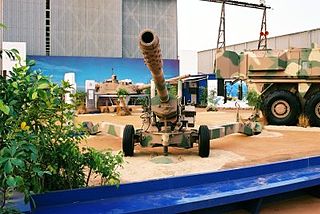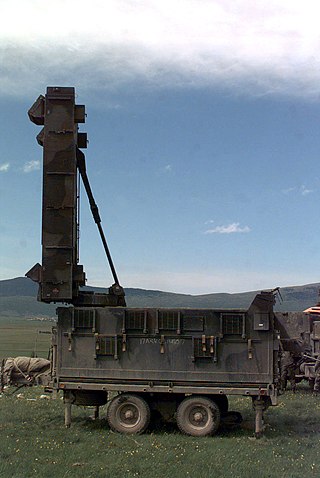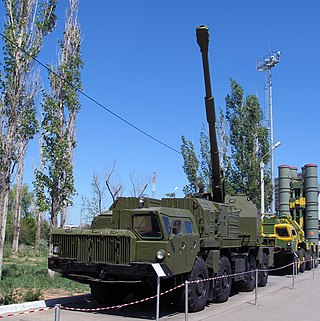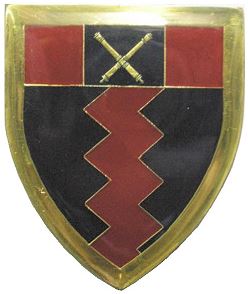| G6 | |
|---|---|
 G6 howitzer parked at Air Force Base Ysterplaat in 2006 | |
| Type | Self-propelled artillery |
| Place of origin | South Africa |
| Service history | |
| Used by | See Operators |
| Wars | South African Border War Yemeni Civil War (2015–present) |
| Production history | |
| Designer | Lyttelton Engineering Works [1] |
| Designed | 1981 [2] |
| Manufacturer | Denel Land Systems (turret) Land Systems OMC (chassis) [3] |
| Unit cost | USD $3,272,000 (new) [4] |
| Produced | 1988–1999 [4] |
| No. built | 154 [4] |
| Variants | See Variants |
| Specifications | |
| Mass | 46 tonnes (51 short tons; 45 long tons) [5] |
| Length | 9.20 m (30 ft 2 in) (hull) [5] |
| Width | 3.40 m (11 ft 2 in) [5] |
| Height | 3.20 m (10 ft 6 in) [5] |
| Crew | 6 [3] |
Main armament | 155mm G5 howitzer (47 rounds) [5] |
Secondary armament | 12.7mm M2 Browning machine gun (900 rounds) [5] |
| Engine | Magirus Deutz Model FL 413 F/FR air-cooled diesel [4] 525 hp (391 kW) [5] |
| Power/weight | 11.17hp /tonne (8.7 kW/tonne) [3] |
| Suspension | Torsion bar with hydraulic shock dampers [4] |
| Ground clearance | 0.45 m (1 ft 6 in) [3] |
| Fuel capacity | 700 litres [5] |
Operational range | 700 km [3] |
| Maximum speed | 90 km/h (55 mph) [5] |
The G6, sometimes denoted as the G6 Rhino, [6] is a South African self-propelled howitzer. [7] It was developed as a turreted, self-propelled variant of the G5 howitzer series, mating the gun to a six-wheeled mine-protected armoured chassis. [8] Design work on the G6 began in the late 1970s to replace the obsolescent Sexton being retired from service with the artillery regiments of the South African Army. [9] Serial production commenced between 1988 and 1999. [4]
Contents
- Ammunition characteristics
- Variants
- Operators
- Combat history
- Gallery
- See also
- References
- External links
At the time of its introduction, the G6 was considered one of the most mobile self-propelled howitzers in service. [10] Its chassis was engineered to be mine-resistant and blastproof, allowing it to survive multiple TM-46 detonations during trials. [11] The G6 was conceived as a wheeled rather than a tracked vehicle for this purpose, as well as to allow it to deploy long distances by road without consuming excessive quantities of fuel or requiring a tank transporter. [11]
G6s entered service during the last two years of the South African Border War, frequently shelling positions held by the People's Armed Forces for the Liberation of Angola (FAPLA) during the Battle of Cuito Cuanavale. [12] Their ability to bombard a target and change positions rapidly in less than two minutes, with minimal preparation, greatly reduced the threat posed by retaliatory Angolan air raids and counter-battery fire. [13] A number of G6s were subsequently manufactured for export and purchased by Abu Dhabi and Oman. [14] Export models included a specialist anti-aircraft variant with a GEC-Marconi Marksman turret and twin-barrelled 35mm autocannon. [15]
Chile briefly produced the G6 under licence as the CC-SP-45, although this arrangement was later terminated after the system was not adopted by that country's armed forces. [4] Iraq also manufactured its own domestic variant of the G6 [16] as the Al Majnoon with technical assistance from Canadian artillery engineer Gerald Bull, which later evolved into the much larger and more sophisticated Al Fao. [17]




















